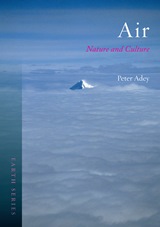Air: Nature and Culture

Peter Adey
Reaktion Books, £14.99
"Air is 78% nitrogen, 21% oxygen, 0.96% argon and 0.4% other gases", is a fact that nearly all GCSE students recall. But how do we know this? Peter Adey's Air answers this and other questions regarding the chemical mixture that surrounds us.
Compressed into the introduction, Adey briefly details the history of the discovery of air and its constituent parts, from the Ancient Greeks to Otto von Guericke, the blind alley of phlogiston and then Joseph Priestley and Antoine Lavoisier.
From here, Adey splits the book into a number of topics that are tangentially related to air. Flight, airborne disease, the believed healing properties of air, and air pollution are all considered in separate chapters. Each chapter intermingles cultural references to air with a sprinkling of the underlying science in an attempt to engage the casual reader.
The book is not the whistlestop tour of the science of air and its uses that you might expect. Frank Whittle's invention of the jet engine is sidelined to a single sentence, and the steam revolution of the 18th century takes up less than a chapter; instead, there is a focus on the representation of air in literature and art, with occasional forays into human history.
Air is not necessarily a must buy for readers who want to enhance their knowledge of the atmosphere, or explore the history of the science. Nevertheless, it is an excellent exploration of how air has been represented in the arts for centuries.


